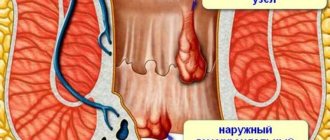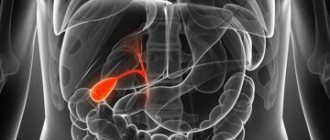Why do such metamorphoses occur in our body, how to live with it, what to replace animal milk with? Our expert answers your questions
Marina Aryaeva
clinical immunologist, allergist, candidate of medical sciences, member of the Association of Honored Doctors of Russia
– Most often, the ability to digest milk (lactose) disappears at the age of 5–7 years, because we stop producing a special enzyme for breaking down lactose.
This is a normal physiological mechanism. However, there are cases when newborns suffer from lactose intolerance: the so-called hypolactasia of newborns. The cause of this problem is insufficient activity of digestive enzymes due to the immaturity of the digestive organs. That is, when a child is born and begins to eat, organs that previously did not work begin to function, but not to their full potential. As a result, insufficiently active digestive enzymes are produced that are unable to break down lactose.
And this is already a serious problem, because the physiological food for babies is mother’s milk. The solution in this situation is special mixtures with hydrolyzed (already broken down) proteins. In addition, such children are given a medicine containing lactase, an enzyme that breaks down lactose.
Neonatal hypolactasia is relatively rare in Russia, accounting for one case per 50,000 newborns
Detailed description of the study
Lactose intolerance (lactase deficiency) is a condition in which, after consuming whole milk and products containing lactose, intestinal disorders (diarrhea, flatulence) occur. Fermented milk products are absorbed normally.
Lactose itself cannot be directly absorbed from the intestines into the blood, as it is a disaccharide. It must first be broken down into two molecules of monosaccharides: glucose and galactose. This is facilitated by the active protein enzyme lactase, which is produced by the cells of the mucous membrane of the small intestine.
Undigested milk sugar causes fermentation in the large intestine and, having high osmotic activity, draws water from the tissues, which leads to diarrhea. If lactose is not absorbed in the small intestine, it enters the large intestine. The bacteria living there absorb this disaccharide, resulting in the formation of water and the release of gaseous substances: carbon dioxide, hydrogen and methane. Due to the accumulation of gases in the large intestine, unpleasant and painful sensations, flatulence, bloating occur, and due to excess water, diarrhea occurs. Fermented milk products, in which all the lactose is converted into lactic acid (lactate), usually do not cause such symptoms.
Main causes of lactase intolerance
1. Primary causes (congenital)
- Complete absence of enzyme. Congenital intolerance includes alactasia (lactase is not produced). This condition is associated with structural abnormalities of the lactase gene and is extremely rare. It appears from birth and is severe.
- Immaturity of premature babies. More often, symptoms appear due to the immaturity of the enzymatic system in premature infants and the unstable functioning of physiological processes. Over time, this condition may disappear.
- Age-related hypolactasia. A genetically determined decrease in lactase levels in children after the first year of life, towards the end of the breastfeeding period. When the need to feed exclusively on milk disappears, enzyme production decreases or stops.
2. Secondary causes (acquired) With secondary lactose intolerance, intestinal epithelial cells are damaged, their ability to produce the enzyme deteriorates or completely disappears. The disease can occur in people of any age. It is provoked by helminthic infestation, infections, tumors, and intestinal inflammation. After eliminating the cause, it does not always disappear.
The enzyme lactase, which is encoded by the LCT (LPH) gene, is responsible for the breakdown of lactose. Regulation of LCT gene activity is carried out under the control of the MCM6 regulatory gene.
LCT and its regulator MCM6 are present in both parental copies of DNA, and a person inherits this gene from both parents. If nucleotide C (cytosine) is present at both sites in link 13910, MCM6 turns off the LCT gene and enzyme production stops, which leads to lactose intolerance with age.
If in at least one section the nucleotide C (cytosine) is absent, and instead there is T (thymine), then the LCT gene is active and working, the lactase enzyme is produced, and milk sugar (lactose) is absorbed by the body.
Coding of designations for possible combinations (polymorphisms):
CC – the combination disables the LCT gene.
TC is a variable polymorphism: the work of a gene may be suppressed or may not change.
TT is a working combination; the lactase gene is not blocked.
Don't confuse allergies and intolerances
A milk allergy occurs when the immune system begins to produce specific antibodies against milk proteins entering the body. The immune system mistakes them for enemies and fights them. This occurs due to insufficiently active enzymes and the body's inability to digest (absorb) milk sugar (lactose). As a result, large, underdigested milk proteins (especially casein) are perceived by our immune system as parasites or worms. And then it begins to produce antihelminthic antibodies. It is these antibodies that cause allergies.
In children, allergies manifest themselves in the form of redness on the cheeks and on the folds of the arms. Severe itching occurs. The same reactions can occur on the mucous membrane of the gastrointestinal tract, that is, an immunological reaction begins there that damages the mucous membrane.
Symptoms indicating a lack of lactose
It is often possible to confuse poor milk absorption with an allergy to it. The symptoms of allergies are different: difficulty breathing, nasal discharge, tearfulness, and rash. An allergy can arise from a very small amount of a product containing an allergen, and the use of all milk in this case is completely prohibited. If you are intolerant, there is no such complete prohibition.
Symptoms of poor absorption:
- Bloating, grumbling, colic.
- Belching and gases.
- Abnormal bowel movements, vomiting.
- In some cases, pain in the abdomen or intestines.
It takes half an hour to two hours after eating for symptoms to appear. The symptoms themselves and their progression depend on the ratio of dairy products consumed and the lack of lactase for its absorption, respectively.
Valio initiatives
Valio in Russia represents centuries-old Finnish experience and unique developments for the well-being of Russian consumers. The company strives to develop public knowledge about the problem of lactose intolerance, therefore it is introducing a number of initiatives aimed at maintaining awareness of both adults and children, considering this important and significant not only in Finland, but also in Russia. The company also strives to communicate how to approach the issue of lactose intolerance from a scientific point of view.
Thus, together with the St. Petersburg branch of the Union of Pediatricians of Russia, there was the first study on the current problem of lactase deficiency among school-age children in Russia, which helped to find out the main causes of intolerance to dairy products, the proportion of the child population of the Leningrad region and St. Petersburg with the existing problem and the level of awareness about correct nutrition in these cases, which does not exclude dairy products, but corrects the diet with the help of specialized food products.
Valio currently supports projects to popularize the topic and works closely with Russian organizations in the field of nutrition. For example, together with the Union of Pediatricians, schools for expectant mothers, scientific conferences and seminars were organized.
Valio lactose-free milk is a unique product, the lactose content of which is less than 0.01%, which makes the product suitable for all consumers - including those who are completely lactose intolerant. Also, starting from 2022, Valio in Russia will present a unique range of Finnish lactose-free ice cream.
Genetically determined lactose intolerance
Modern medicine makes it possible to cure all causes of poor absorption of fermented milk products, except for genetically determined disorders. All that remains is to choose where to take the DNA test, which analysis gives the best results and strictly follow the doctors’ instructions.
It is worth noting that genetically, most people (about 80% of humanity) over the years lose the ability to digest lactose well, and the remaining 20% are some kind of mutants. However, losing all milk from the diet requires replenishing the other beneficial substances it contains by taking multivitamins.
But there is a downside to taking multivitamins: some vitamins and minerals can accumulate, and not taking them correctly can lead to excess and undesirable consequences.
DNA testing is excellent for accurately diagnosing the problem. Genome analysis will make it possible to accurately determine how the body produces lactase: fully, partially, or not at all. You can conduct such genetic research quickly and inexpensively in our clinic. And this is equally convenient to do while in any region of Russia.
"Dairy" story
About ten thousand years ago, people domesticated many animals and began to breed them for meat, hides and milk. Yaks, buffalo, goats and sheep ensured the transition of communities from hunting to agriculture.
Cattle breeders and farmers could migrate across Europe, because they provided themselves with food and ceased to depend on luck in the hunt.
Milk was stored in wineskins made from animal skins or stomachs. Perhaps, thanks to this storage method, the first piece of cheese was born. Subsequently, cheese became the main food in Egypt, Rome and other countries. During the Middle Ages, recipes for most of the cheeses that we know and love to this day were developed.
But the creation of cheese not only led to the emergence of a new tasty and long-lasting product: the constant consumption of cheeses also contributed to a decrease in the synthesis of the lactase enzyme. After all, the content of milk sugar (lactose) in cheese is much lower than in whole milk. It has been scientifically proven that about 6 thousand years ago a gene mutation arose, which resulted in a deficiency or insufficient synthesis of the enzyme.
Surprising but true! The Middle East is considered the “father” of cheese making, but lactose intolerance among the population is highest there. In Northern Europe, approximately 5-6% of the population suffers from lactase deficiency; in Africa and Asia, approximately 50% of the population cannot tolerate dairy products. In Russia, from 10 to 70% of the population does not tolerate dairy products, depending on ethnicity and geography of residence.
What is lactose?
Lactose or milk sugar is a carbohydrate in milk. According to its chemical structure, it is a disaccharide formed by simple sugars - glucose and galactose. Like all carbohydrates, lactose is an additional source of energy. Carbohydrates are also a “building” element of the body: for example, for cell membranes, cartilage and bone tissue, etc. Carbohydrates accumulate in the body in the form of glycogen, which is the body’s energy reserve for a “rainy day.” Lactose is produced in the mammary glands of mammals and is found naturally only in milk.
Added lactose is used in the manufacture of many food products to improve structure, taste and other properties. For example, lactose can be found in bread, frozen vegetables, canned soups, salad dressings and sauces, spaghetti, candy, and even pharmaceutical products as an excipient.
Milk does not need advertising!
But, nevertheless, let's try again to talk about the benefits of dairy products. First of all, they are a source of calcium (Ca) and fat-soluble vitamin D. The vitamin is “responsible” for the absorption of calcium in the intestines and its integration into the bone skeleton, that is, it ensures bone strength, and calcium is necessary for the functioning of muscles, the nervous system, the heart and blood vessels , immunity, blood clotting.
A glass of milk a day provides the daily requirement of vitamin D and calcium for children and adolescents!
Now on store shelves there is a sufficient amount of dairy products with low lactose content - cheeses, cottage cheese, yoghurts, milk. In such dairy products, the complex carbohydrate lactose has already been broken down into simple carbohydrates, so they do not cause symptoms of milk intolerance.
Secondary lactase deficiency
It can be caused by external factors, such as food allergies (including cow's milk protein), an intestinal infection, or the lack of treatment for a disease such as celiac disease (read more about what it is here). These diseases affect the body's digestive system and have a negative impact on the production of the lactase enzyme. However, in some cases, the body can recover from illness, as well as its ability to produce lactase.









